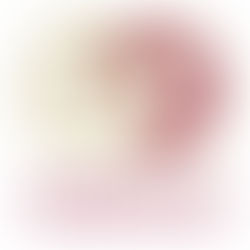Test: Trying out coloured engobes
Taking up the suggestion by tutor, Wendy, I am trying out engobes. She suggested that they might work well on my pinch pots. Linking my colourful patterns on the outside to a colourful inside. What have I got to loose?

Thus, with Wendy's help I mixed two colours: black and blue engobes. I was astonished by the ratio she mixed them at: 50% blue stain to 50% engobe and 25% white stain to 75% engobe. To me that seems a lot of stains but as these were Wendy's materials and her recipe I assume that the ratio is correct. Stains and engobes are by ATC colours, Stoke. Not sure I would be able to afford this on my own budget.
Anyway, she suggested to apply the engobes to bisque ware but I decided to also try them out on greenware.
Greenware test:


Poured engobes into inside of leather hard pots. My suspicion was that they were rather thick. After bisque firing it already became obvious that there was a problem with the bond between engobe and clay body. Some of the engobe was shelling off the rim and on the inside.

I tried to conceal these faults with the design liner decorations I applied before the second bisque firing.

I brushed on latex resist to mask out the areas I wanted to remain unglazed on the outside of the pots before glazing the outside with a clear E/W glaze. The pots were fired to ca 1075°c.
Result:

Not really the most successful test. The shelling off of the engobes was even worse after glaze firing.


In the end I scraped off as much of the loose engobe on the inside of the pots as I could. I added another layer of design liner decorations to see whether I can bring them back from the brink. I will refire them to a slightly higher temperature as they seem to be slightly underfired as not all of the pigment has fused but leaves slight colour traces to the touch.
Bisque ware test:
After a high bisque firing I applied the decorative bands on the outside of the pots in a combination of design liners and underglaze paints.


Then they went through a second bisque firing to set those colours. I used latex resist the mask out areas before spraying them with an even coating of the blue engobe. On one of the pots I decided to continue the blue engobe to the outside to make an even stronger link between the inside and outside of the pot. I carefully brushed on the clear E/W glaze to bring out the underglaze colours on the bands on the outside. The two pots were fired along with the other two test pots to ca 1075°c.

Result:
As said, I think these pots are slightly underfired and I will try to refire them to a slightly higher temperature. However, I already know that engobes are not the way forward for me. I don't like the flat dry surface quality. For me engobes make my pots feel dead. They do not provide the wished for link between the outside and insides of my pinch pots. I also don't like the fact that the use of engobes would reduce the functionality of my pots.

However, I have gained a real respect for people using engobes as one has to work very cleanly and precisely to get a good finish. Little mistakes are so clearly visible. Glazes are much more forgiving. Should I want colour in the insides I'd much rather resort to coloured slips.

















